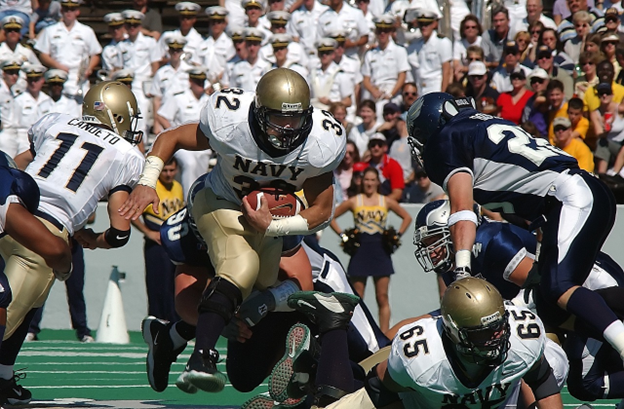
|
In the past decade, college football has undergone a transformation so significant that the term “New Normal” seems almost an understatement. The National Collegiate Athletic Association Football (NCAAF) has encountered unparalleled shifts, ranging from player rights and evolving media landscapes to increasing commercial opportunities. Let's delve into this altered playing field and understand the terrain.
1. Embracing Digital Streaming Platforms
Traditional television broadcasts have been the holy grail for college football viewing. But, with the surge in streaming platforms and direct-to-consumer offerings, there's a notable shift. Schools and conferences have begun partnering with digital providers, granting fans unrivaled access. This move ensures college football's future, as younger generations predominantly consume content online. While still in its early stages, the move to streaming offers potential beyond game broadcasts, including behind-the-scenes access, player interviews, and tailored content.
2. Amplifying Athlete Voices
The “New Normal” is not just about technology and platforms; it's also about people, specifically the players. In recent years, student-athletes have advocated for their rights more vocally. The age-old debate about whether college athletes should receive compensation has led to policy reviews and significant changes.
The NCAA's decision to allow players to monetize their name, image, and likeness (NIL) has been groundbreaking. This change doesn't just transform the game's financial side—it fundamentally reshapes the college football ecosystem, with players becoming more influential in branding and marketing. The transfer portal has also played a significant role, giving athletes the freedom to change schools and go to locations they feel will improve their financial future.
3. Comprehensive Health Protocols
As the world grappled with the COVID-19 pandemic, college football wasn't spared. The crisis ushered in a slew of health and safety protocols that became the central theme of the 2020 season.
Even as things slowly return to a semblance of normality, the emphasis on health remains. This focus goes beyond just pandemic-related measures; there's an increasing awareness of player mental health, concussion protocols, and general well-being. In this new era, the health and safety of players, staff, and fans are paramount.
4. Enhanced Fan Engagement
Understanding the fanbase's pulse is now more crucial than ever. With the introduction of digital platforms and interactive opportunities, teams and colleges are focusing on deepening fan engagement. Virtual reality experiences, interactive game day events, and real-time fan feedback mechanisms are becoming standard. These efforts ensure that fans feel connected to their teams and adapt to the rapidly changing expectations of a digital-savvy audience.
5. Shifting Competitive Landscapes
It's not just the powerhouses that grab headlines in this era. Thanks to the democratization of media access and the potential for increased revenue streams through digital platforms, smaller colleges and teams are finding their foothold. This shift leads to unexpected competitive matchups, unanticipated top-10 rankings, and the rise of underdogs. Parity is becoming the name of the game, and with next year’s College Football Playoff expanding to 12 teams, more small schools will enter the title conversation.
6. Evolving Recruitment Tactics
The NIL changes and digital platform growth haven't just affected current players—they're also shaping future stars. Recruitment has entered a digital age, where online visibility, social media prowess, and personal branding are as essential as on-field talent. Coaches and recruiters now not only pitch the school's football program but also its ability to enhance a player's personal brand.
7. The Rise of NCAAF Wagering
In recent times, wagering on college football has taken center stage, growing in popularity and sophistication. As states across the U.S. increasingly legalize sports betting, NCAAF games have attracted considerable attention from punters and enthusiasts.
Platforms offering NCAAF odds, like the FanDuel NCAAF Odds, are leading the way, offering a comprehensive and user-friendly experience for those wanting to place bets. This development is not just about choosing the winning team. Advanced statistics, in-depth NCAAF research, in-game betting, and prop bets are adding layers of complexity and engagement to the experience.
This uptick in sports gambling has led to increased fan engagement, especially among those who might not have previously followed college football closely. On the flip side, there's a greater emphasis on maintaining the integrity of the sport. The NCAA, colleges, and teams are investing in education and surveillance measures to ensure fair play remains at the forefront.
While wagering adds another dimension to the fan experience, it also comes with responsibilities for stakeholders. Balancing fan enthusiasm with ethical considerations will be key as the NCAAF navigates this burgeoning domain.
Closing Thoughts
Navigating the NCAAF's “New Normal” is akin to charting unfamiliar territory, but it's an exciting journey. For fans, players, coaches, and administrators, these changes present opportunities to redefine college football's future. As the landscape evolves, those who adapt will thrive, ensuring that the passion, excitement, and tradition of college football remain undiminished.







